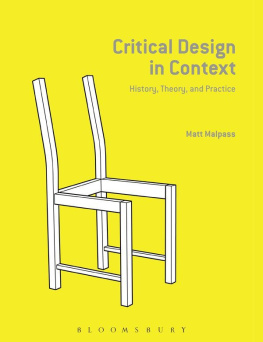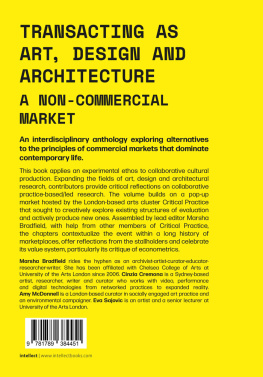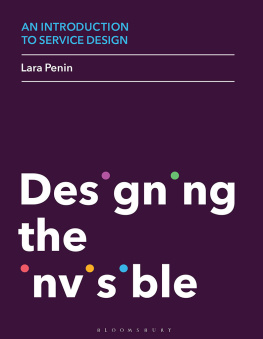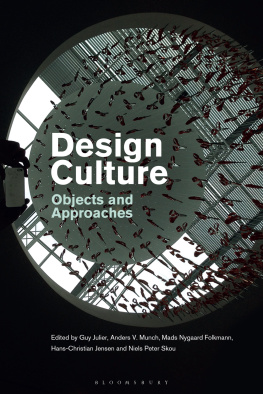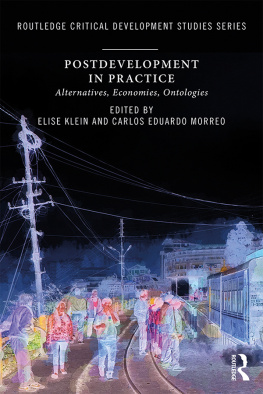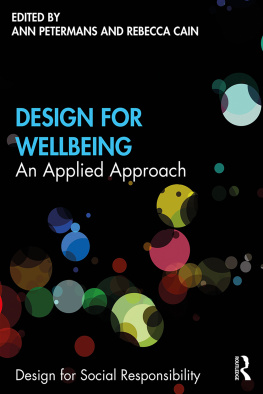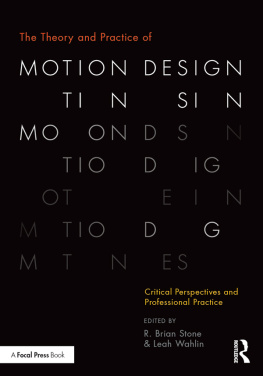
CRITICAL DESIGN
IN CONTEXT
CRITICAL DESIGN
IN CONTEXT
History, Theory, and Practices
MATT MALPASS
Bloomsbury Academic
An imprint of Bloomsbury Publishing Plc

CONTENTS
There are many people to thank for their support while writing this book and I am grateful for the contribution that many have made towards developing the account of critical design practice presented in the following chapters. To others, I am grateful for the support and advice offered during the process of research and writing. There are a few people that I must thank by name: First, Tracy Cordingley and Jamie Billing for introducing me to the field and setting me off on a form of inquiry with a direction and energy that sustain my interest in critical design practice today; Steve Rutherford, Hugh Miller, Tom Fisher, and Guy Julier for their insight and critical input in the formative stages of this project; and Lorraine Gamman, Adam Thorpe, Janet McDonnell, Nick Rhodes, Rebecca Ross, and the Design Against Crime team at Central Saint Martins for their support, for all the opportunities, and for affording the necessary culture in which to develop this work. I am grateful to Nottingham Trent University, and the University of the Arts London but especially to the staff and students of MA Industrial Design at Central Saint Martins who provided a day-to-day context for experimentation, a forum for debate, and a space to continually test ideas and thinking. For generously sharing their perspectives on the field over the past few years, my sincerest thanks go to Ralph Ball, Maxine Naylor, Anthony Dunne, Fiona Raby, Noam Toran, James Auger, Tobie Kerridge, Ramia Maz, Kieren Jones, Nelly Ben Hayoun, Stephen Heyward, Bruce and Stephanie Tharp, and Jana Scholtz. My gratitude goes to all the designers who have generously contributed images of their work to exemplify the practice and illustrate the discussion. Thanks to Rebecca Barden for commissioning the work and the editorial team at Bloomsbury for their support throughout, to Heather Griffith for her input on early drafts, and to the reviewers for their critique and input in developing the manuscript. Finally, I would like to express my deepest gratitude to my family, Dianne, Paul, and Jonathon Malpass, Debbie and Andrew Moss, and Rita Lee for their enduring support and to Chloe Griffith for her support, critical acumen, advice, patience, and enthusiasm throughout. Thank you!
Industrial design is typically perceived as the process of design applied to the development and manufacture of products for mass production and consumption. It is synonymous with companies, such as Apple, for their technological innovations wrapped in aluminium and glass casings, which millions consume, and millions more aspire to own and use. It is synonymous with furniture design conceived by the likes of Charles and Ray Eames, Arne Jacobsen, and George Nelson, designs that are now produced and distributed by companies such as Vitra and Herman Miller and adorn stylish living rooms and offices in many cities around the world. It is synonymous with the innovative production and material processes developed by Kartell in their plastic products, Dyson in their vacuum cleaners, Artemide in their lighting, and Unilever in their packaging. It is synonymous with the stripped back modernist aesthetic of Dieter Rams for Braun, or Naoto Fukasawa for Muji. It is synonymous with such superstar designers as Marc Newson with a flash of orange as motif in his product design, Ross Lovegrove with his biomorphic obsessions, Philippe Starck with his love of compound curves, and Karim Rashids pink blobjects. These examples of industrial design are conceived within a market-led paradigm. In this paradigm, the products of design are ultimately commercially orientated, designed, and produced for sale and use.
While industrial design practice might exist to drive production and consumption in a commercial paradigm, this is not its only application. Alternative models of industrial design exist to these mainstream practices. These models of practice are critical of orthodox applications within design practice; they are conceptual in their focus and challenging in their effect. This book is about such critical design practice.
In critical design practice, designers reject a role for industrial design that is limited to the production of objects conceived solely for fiscal gain and technological development. It seeks to avoid conventional production and consumption, offering an alternative use of industrial design. Instead, they propose that product and industrial designinquire into matters of concern through the creative processes involved when designing objects. They propose that the forms of interaction that occur within the design process, and through a users engagement with design work, can bring into relief issues by the materialization of these issues in objects and the experiences afforded. Guided by this rationale, critical design practice aims to challenge the current state of industrial design. In critical design practice, the principles, methods, and tactics of design are extended towards an application for design that offers more than a service-based relationship between a client and a designer. In doing this, it applies strategies that challenge the limits of design. These designs act as a form of critique and argument that is established through the design of objects and through the communication of an objects narrative of use. This is achieved through processes of making and production, scenario building, and storytelling.
An increasing number of designers aim to present and define this approach. The practice has grown in popularity within the industrial design discipline over the past decade particularly in an academic context of design research and postgraduate education. However, while there is much attention focused on critical design in practice, and where many examples of work populate exhibitions and design blogs, this book is amongst the first to theorize the field of critical design practice by presenting an overview. It considers the relationships between types of critical design practice, examples of design work, and the methods and tactics employed in practice. This is not to say it is the first book on critical design; there are a number of influential works written by practitioners who have worked to popularize and advance the field. There are increasing examples of researchers, design theorists, and critics working to understand and challenge the practice through academic articles, design writing, exhibition text, and the blogosphere. Notable exhibitions focusing on the practice include Strangely Familiar: Design and Everyday Life held at the Walker Arts Center, Minneapolis, USA, in 2003. This presented numerous examples of critical practice that blur the boundaries between form and function, questioned the habitual, and challenge hegemony within quotidian conditions. AC DC Art Contemporain Design Contemporain held in Geneva in 2007 brought designers, curators, critics, and academics together to question the influence of arts practice on emerging critical and conceptual forms of design. Designing Critical Design held at Z33, Hasselt, Belgium, in 2007 was the first exhibition to title an exposition of work as critical design. It brought together some of the main protagonists in the field including Dunne and Raby, Jurgen Bey, and Mart Guix examples of their work will be explored in later chapters. The following year in 2008 similar themes and examples were showcased at Somerset House in London in
Next page
